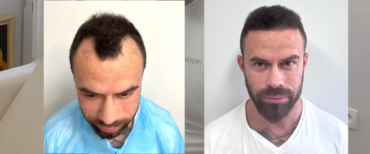Repairs in hair transplant

Every day, disfiguring hair transplants are fraudulently performed worldwide by untrained and unqualified personnel
Vulnerable patients are lured with low prices and deceptive advertising that provides misleading information.
Hair transplant procedures are carried out by untrained doctors and unlicensed technicians illegally.
Clinics that operate illegally create disfiguring hair transplants.
The irreversible aesthetic outcomes encompass lasting visible scarring, infection, sparse hair growth, bald spots, and follicular depletion as a consequence of over-harvested donor areas.
In this blog, I would like to talk to you about an intriguing aspect of the field of hair transplant surgery: repair cases. Hair transplant surgery has come a long way in recent years, offering individuals a second chance at a natural and aesthetically pleasing head of hair. However, it’s essential to understand that not all hair transplant surgeries go as planned, and some patients seek repair procedures to correct prior surgeries that did not yield the expected results. In the world of hair transplant surgery, repair cases present a unique and challenging set of circumstances.
A hair transplant surgery repair case refers to a situation in which a patient has undergone a previous hair restoration procedure that did not meet their expectations, leaving them with unsatisfactory results or visible signs of scarring and unnatural hair growth. There can be several reasons for such cases, including poor surgical techniques, inexperienced surgeons, outdated procedures, or worse, the surgery being performed illegally by technicians.
Repair cases require the expertise and skill of experienced hair transplant surgeons. These professionals must carefully assess the patient’s specific situation, taking into consideration factors such as the density of donor hair available, the type of prior procedure performed, and the extent of the previous damage. Repairing a botched hair transplant is not a one-size-fits-all approach and often involves customized techniques to achieve the best possible outcome.
There are several key components to consider in repair cases:
- Assessment: The initial step involves a comprehensive evaluation of the patient’s current condition. Surgeons need to identify any visible scarring, irregular hair growth patterns, or signs of unnatural graft placement.
- Donor Hair Management: One of the significant challenges in repair cases is donor hair management. The surgeon must utilize the limited donor hair resources efficiently to camouflage or correct the previous problems. This requires a deep understanding of donor hair characteristics and planning to ensure an aesthetically pleasing outcome.
- Advanced Techniques: Repair cases often necessitate the use of advanced hair transplant techniques such as FUE (Follicular Unit Extraction) or FUT (Follicular Unit Transplantation), depending on the specific needs of the patient.
- Patient Education: Open and transparent communication with the patient is crucial. Patients must have realistic expectations about the outcome, as repair cases may not achieve the same density as a virgin scalp. Managing these expectations is a vital aspect of the surgical process.
- Post-Operative Care: Proper post-operative care and follow-up are essential to ensure that the transplanted hair grafts take hold and grow as expected.
It’s important to acknowledge that repairing a hair transplant surgery gone wrong can be more complex and challenging than performing a primary hair transplant. The goal is not just to restore the patient’s hair but also to achieve a natural and harmonious appearance that blends seamlessly with the surrounding hair.
In conclusion, repair cases in hair transplant surgery are a testament to the evolving field of medical aesthetics. Skilled and experienced hair transplant surgeons play a critical role in transforming a patient’s botched hair transplant into a success story, ultimately boosting their self-confidence and quality of life. As technology and expertise continue to advance, repair cases become increasingly promising, offering a second chance for those who have had less fortunate experiences with hair restoration procedures.
